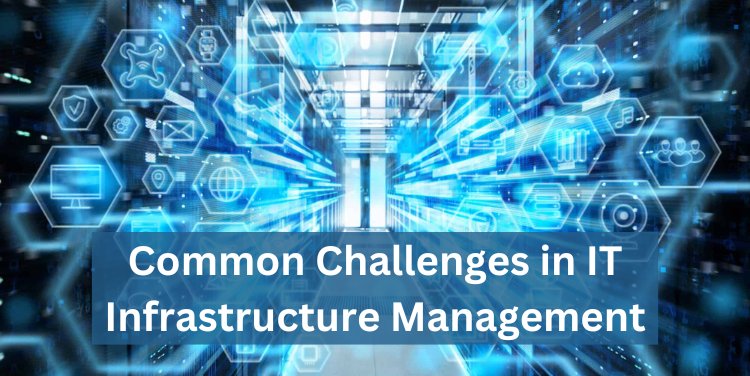Common Challenges in IT Infrastructure Management

Managing IT infrastructure is critical for the smooth functioning of businesses today. However, this task can be fraught with challenges, particularly as technology evolves and business needs grow. Here are some common challenges IT infrastructure management faces:
1. Security Threats
Cybersecurity is one of the foremost challenges in IT infrastructure. With increasing incidents of data breaches, ransomware, and phishing attacks, protecting sensitive information and maintaining secure networks is an ever-growing concern. Infrastructure managers must constantly monitor for vulnerabilities and implement robust security protocols, including encryption, firewalls, and multi-factor authentication.
2. Maintaining Uptime and Availability
Ensuring continuous availability and minimizing downtime is a significant challenge, especially for organizations with global operations. IT teams must manage various servers, networks, and applications to prevent outages and system failures. Downtime can result in significant financial losses, damage to reputation, and operational disruptions.
3. Scalability
As organizations grow, so do their IT needs. Infrastructure managers must ensure that systems can scale without performance issues. Scaling infrastructure can involve upgrading servers, storage, and network capacity, as well as managing increasing volumes of data and applications without compromising efficiency.
4. Legacy Systems
Many businesses continue to rely on legacy systems that are outdated and difficult to integrate with newer technologies. Maintaining these systems while simultaneously incorporating modern IT solutions creates compatibility and support challenges, often leading to higher maintenance costs and security risks.
5. Cost Management
IT infrastructure can be expensive to maintain. Balancing the need for cutting-edge technology with budget constraints is a constant struggle. Costs related to hardware, software licenses, cloud services, and personnel must be carefully managed to avoid overruns while still meeting business requirements.
6. Compliance and Regulatory Requirements
Many industries are subject to strict regulations concerning data security, privacy, and reporting. Ensuring that IT infrastructure complies with standards like GDPR, HIPAA, or PCI-DSS requires constant oversight. Non-compliance can result in penalties and legal consequences.
7. Cloud Management
The adoption of cloud services has added another layer of complexity. While cloud solutions offer scalability and flexibility, managing cloud infrastructure involves dealing with multi-cloud environments, optimizing costs, ensuring data security, and maintaining service-level agreements (SLAs). Cloud governance, cost management, and hybrid cloud integrations are ongoing challenges for many businesses.
8. Automation and Monitoring
Implementing automation tools for routine tasks like system updates, backups, and network monitoring is crucial for efficiency. However, setting up these automated processes and monitoring systems across different platforms and environments can be complicated. Infrastructure managers must ensure that automation tools are reliable and offer real-time insights without compromising system performance.
9. Talent and Skill Gaps
The rapid advancement of IT infrastructure technologies, including AI, cloud computing, and cybersecurity, has created a skills gap in the workforce. Finding qualified professionals who can manage complex IT systems and stay updated with new technologies is increasingly difficult, leading to talent shortages in many organizations.
10. Disaster Recovery and Business Continuity
Establishing a robust disaster recovery plan is essential to mitigate the risks of data loss due to natural disasters, cyber-attacks, or system failures. Maintaining backup systems and ensuring a fast recovery time objective (RTO) and recovery point objective (RPO) requires significant planning and investment.
Conclusion
Efficient IT infrastructure management is essential for any business, but it comes with several challenges, including security risks, maintaining availability, and keeping pace with technological advancements. Addressing these issues requires a strategic approach, including regular updates, investment in talent, and leveraging the latest automation and security technologies.
By understanding and anticipating these challenges, organizations can take proactive steps to ensure their IT infrastructure remains resilient and aligned with their business goals.
What's Your Reaction?















